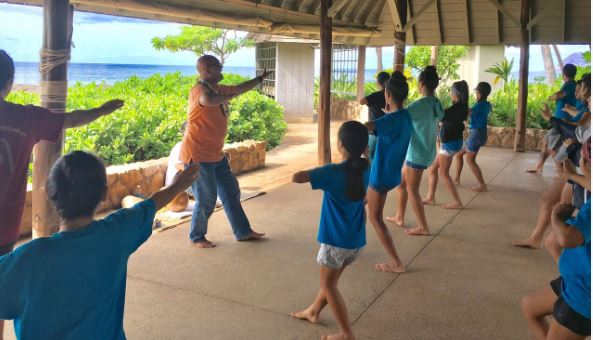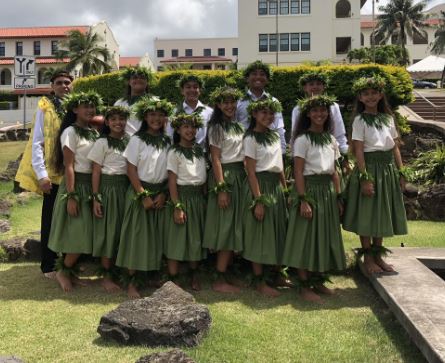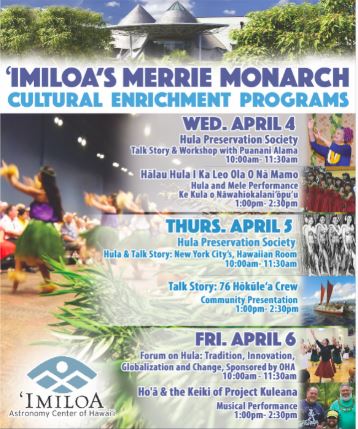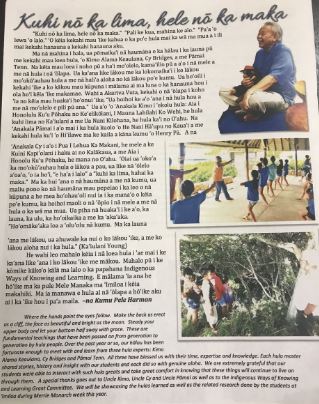
Sharing stories through traditional chants and dances is an important and meaningful interaction and learning process. The participants looked back with gratefulness at this project as they saw the relevance of these cultural forms breathed life to the transfer of knowledge from one generation to the next. In the island of Oahu in Hawaii, traditional practitioners nurture this, to aspire for “Ola a Laupaʻi,” or that which lives and continues to thrive and flourish. The hālau which is the traditional Hawaiian dance school and the Hālau I Ka Leo Ola O Nā Mamo or the hula school of the living language of the descendants are the centers where traditional cultural dance experts build the capacity of young students as a means to preserve traditional ways of knowing.
The renowned hula masters who have been teaching the dance for more than 30 years readily welcomed the students as participants to dance lessons accompanied by chants. The masters were extremely impressed that the students spoke the Hawaiian language and were determined to learn the hula. As the students made progress with their lessons, their school teachers likewise learned much about themselves and how traditional knowledge should be transmitted to the younger generation. Kekoa L. Harman said, “The moʻolelo, or stories and anecdotes, along with the movements shared with the students from each hula master, created a rich context and often “fun” dialogue for the students to learn. It was rewarding to watch the presentation of dances in front of all of the hula masters who taught the dances.”

In learning from elders, the students were respectful, observant, and quick to learn the dances. The hula masters do not commonly interact with youth of this age level on a regular basis but they all enjoyed working with the young Native Hawaiians who have an “aloha,” or appreciation for the knowledge they have.
Traditionally, men are both the hula teachers and the drum players while the women dance and help in leading the chants. The participants realized the men’s important role in teaching traditional dances and chants. On the other hand, the women’s invaluable role is recognized in the performance of these chants and dances.
Meeting the elders was a highlight for the young students and actualization of traditional knowledge transfer. In the era of social media and information technology, the importance of kūpunaor elders must not be forgotten nor ignored. Listening to the elderly hula masters share their life stories and relation to hula was transformative and inspirational, which the participants appreciated and integrated into their own performance.
Participant Akariva Vuta said, “It was interesting to learn new dances along with the stories that went with them.” Fellow student Kaʻiulani Young had this to say, “The trips were full of learning, socializing, growing, and strengthening, along with laughter. The teachers were funny and kind and the breadth of their knowledge and their great love for hula was very evident.”
The students’ awareness and understanding of the Native Hawaiian knowledge expressed in the chants and dances was enhanced. Alotofpreparation wentinto the public performanceto make surethatthedanceswerelearnedcorrectly, even the sourcing and designing of the appropriate adornment, clothing,thenaturalflowersandgreenerytobeworn,were meticulously considered to remain true to tradition. Additionally, the participants visited sacred sites that enriched their insights into the Native Hawaiian history.

The entire community identified with their living cultural resources and took pride in the wealth of their traditional knowledge. They intimately connected with the traditional chants and dances that are not regularly performed. The youth interacting with the hula masters/elders provided the former a greater sense of well-being. They also cultivated a deeper sense of leadership and responsibility through their participation. Each indigenous student who was chosen because of commitment to the Hawaiian language and hula was able to understand their responsibility to learn these dances and their meaning.
All the dances and chants were documented in the course of the project’s implementation and these video and sound recordings were used to review the dances learned with the hula master who was not used to this technological innovation. The hula masters, of a different era, understood that the process was important for the students to fully learn and understand the footwork and movements. They recognized too that teaching and learning of traditional dances and chants must continue and be documented so that the natives do not forget them.
All those involved in the project concluded thus: “We must continue further on this path as “enlightened” indigenous peoples who take pride in our traditional practices and play a leadership role in developing others in our family and community to continue the language and the transmission of these practices.”


The project “E Ola A Laupaʻi: Long Live the Knowledge of the Ancestors Through the Descendants” was implemented by the organization Hālau I Ka Leo Ola O Nā Mamo in 2017 through the support of PAWANKA Fund.
